Last Updated on December 23, 2021 by melissanreynolds
Can a Fitbit improve your health? Especially if you have chronic pain and fatigue?
Yes, I think so. Especially when you combine it with your general symptom tracking. If you have followed this blog for any amount of time, you know I am big on symptom tracking and experimenting.
A Fitbit (or other fitness tracker) can track many things. I track several metrics and I am well underutilizing mine.
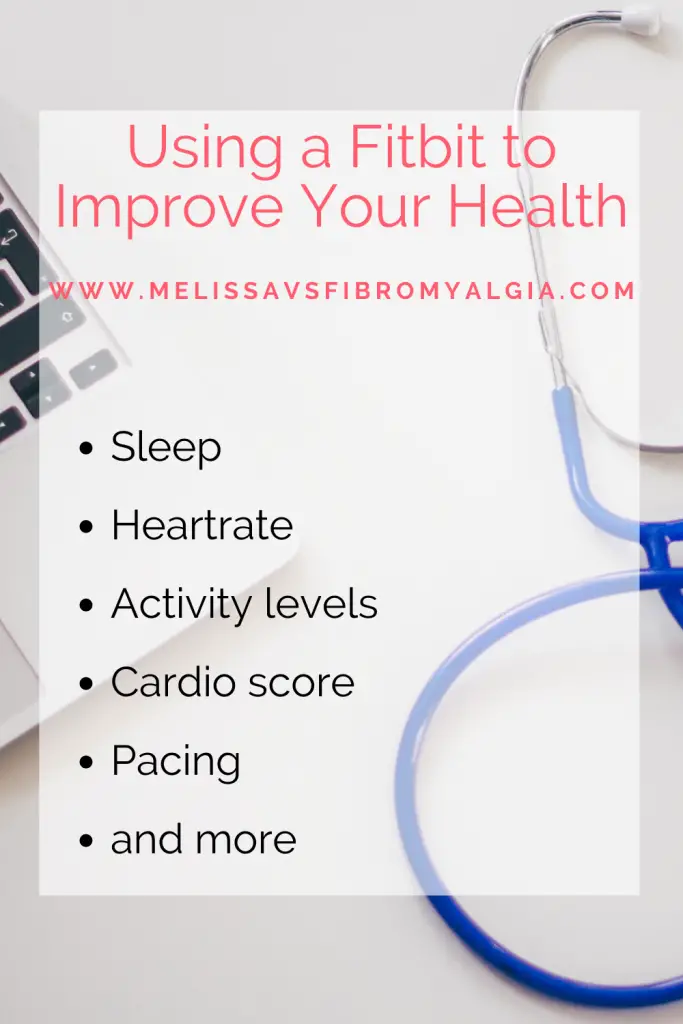
My Fitbit
I have a Fitbit Versa 2 and I love it. It is the only watch-like device I’ve ever worn consistently.
Affiliate notice: This is an affiliate link, if you make a purchase using this link I will make a small commission at no extra cost to you.
If you don’t like this one, the Fitbit store has many options.
You could add this to your Christmas wishlist!
Here’s how the Fitbit helps me and could help you improve your health too.
Sleep
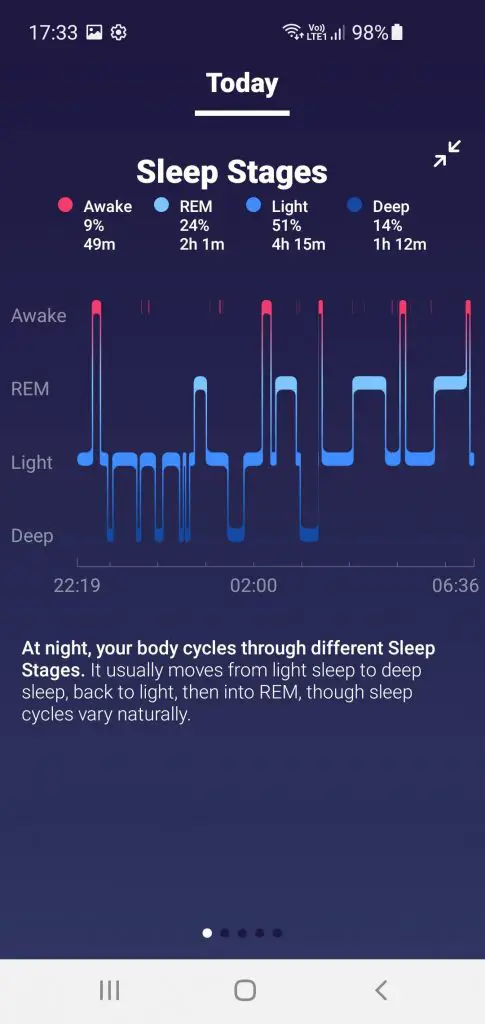
This is really important in the chronic pain and fatigue journey. Tracking our quality of sleep as we enact sleep hygiene tips, supplements and medicines is so easy with this.
It also helps us not to get too bogged down into detail. We look at quality and quantity of sleep.
There’s a handy feature to lay each night over our last 30 days and against benchmark (the average range).
My average for deep sleep was 2-8% prior to low dose naltrexone, consistent yoga nidra and Recovery Factors. Now it is around 8-16%. So not often in the normal range but I can feel the difference!
Heart rate
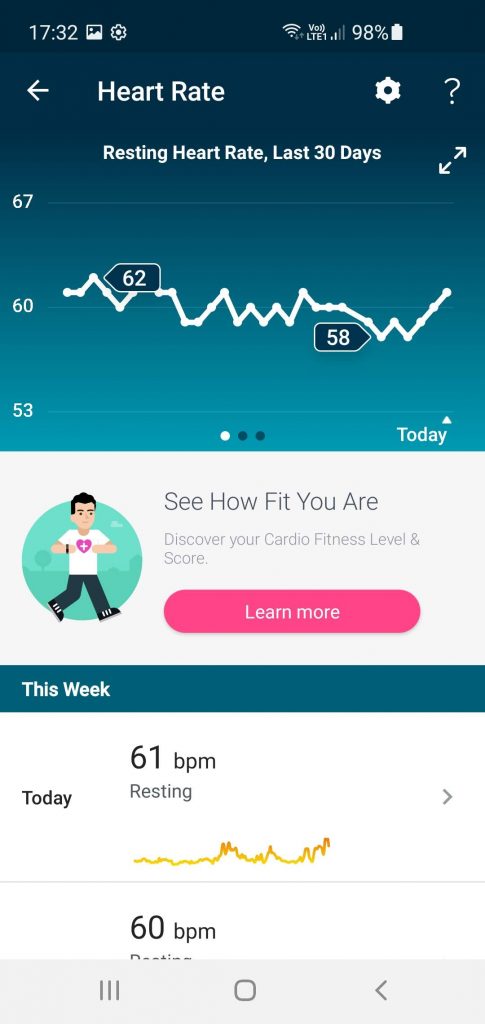
Resting heartrate – this measure shows us our heartrate at rest. It should be 60-100 for an adult.
Meditation can lower your heartrate, “Integrating the practice into a daily routine has been linked to lower heart rate and blood pressure, which may lower your risk of heart disease.” It has definitely helped lower mine.
Heartrate variability – the amount our heartrate varies can tell us if our autonomic nervous system is balanced.
In this interview by Katie from Painfully Living Dr Lillydahl says “To simplify, heart rate variability is a measure of your body’s relaxation response. Put slightly differently, HRV is a measure of the body’s resilience to life’s inevitable challenges and stresses. Over months or years, higher HRV scores indicate better health.” The article gives you some ways to improve your HRV and why it is important.
This article puts it this way, “Over the past few decades, research has shown a relationship between low HRV and worsening depression or anxiety. A low HRV is even associated with an increased risk of death and cardiovascular disease.”
Researchers are considering using HRV in Fibromyalgia indicators/diagnosis.
Checking on your heartrate throughout the day can give you a sense of whether your HRV needs work.
Exercise and Pacing
The Fitbit can tell us what zone our heartrate is in. When we are exercising if our BPM (beats per minute) goes over a certain number then we can move through “fat burn”, “cardio” and “peak”.
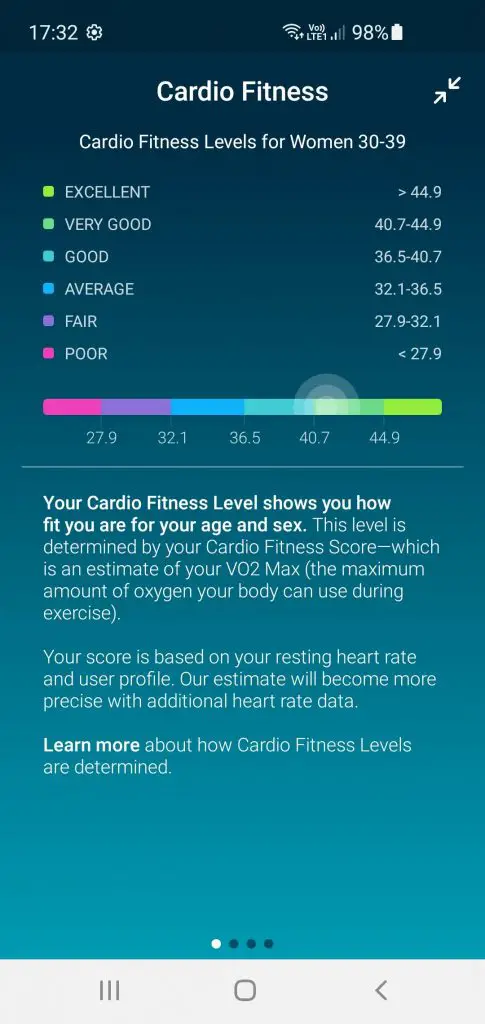
Knowing our ideal heartrate for exercise can help us reduce the risk of post exertion malaise:
“For healthy people, AT [anaerobic threshold] is usually estimated simply by (220 – age), which is the heart rate at which they switch from aerobic to anaerobic metabolism. For someone with ME/CFS, though, the AT is much lower, often just 50-60% that of a healthy person.”
For me this means aiming for around 111 when exercising or 129 if I’m working at 70% of normal.
Activity Levels and More Pacing – Steps
This is great for helping us to pace well. Once we get a sense of how many steps are within our current energy envelope we can use this as a tool to help manage the pain and fatigue.
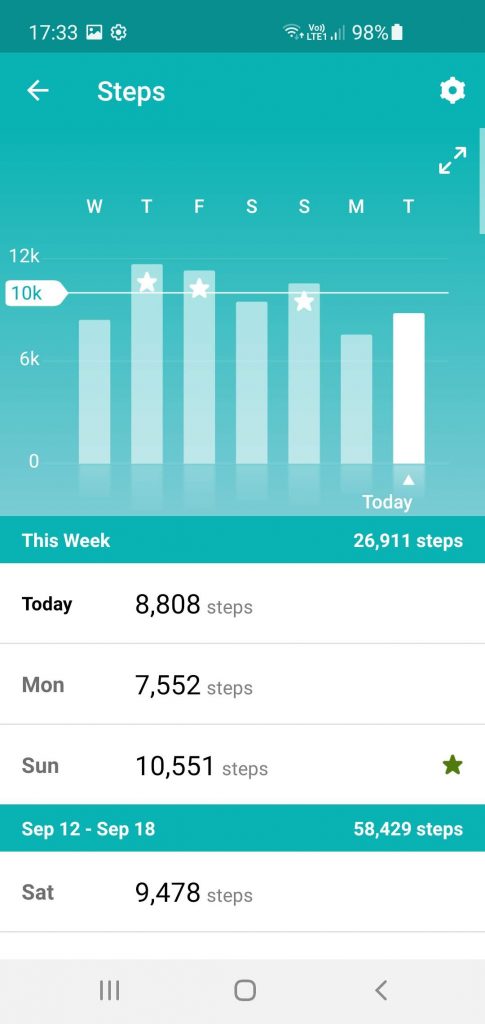
For example, if 5000 steps is our edge for managing pain and fatigue levels, then we know that if we have done 4000 steps by lunchtime we had better plan a restful afternoon.
We can also use it if we want to increase our abilities. For example, using our baseline of 5000 steps, we might decide to see how 500 steps extra goes.
Learn more about Pacing in these free trainings.
Summary – Using Fitbit to improve your health
There is so much more a Fitbit can do but these listed here are key for helping us with chronic pain and fatigue. Pacing, heartrate levels, sleep quality and quantity, exercise and much more.
Get Your Own Fitbit
Affiliate notice: This is an affiliate link, if you make a purchase using this link I will make a small commission at no extra cost to you.
If you don’t like this one, the Fitbit store has many options.
You could add this to your Christmas wishlist!
Tell me, do you have one? What is your most valuable thing to track?
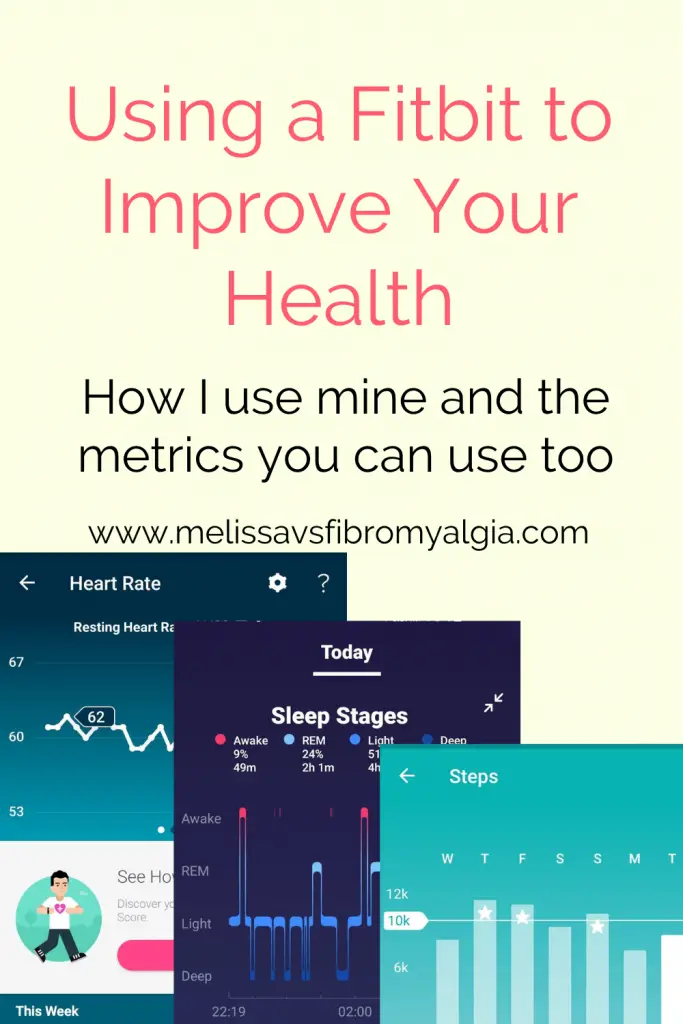
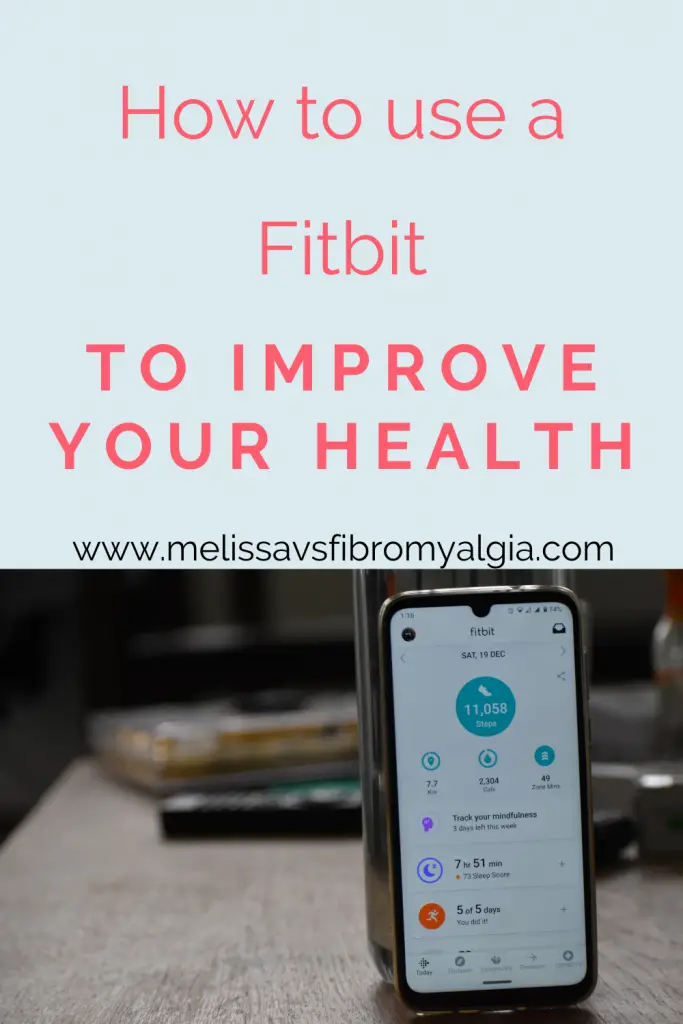


I agree that a Fit Bit can be a great help. One more way to listen to our body in a way that is a bit more concrete.
Thank you for including my article on HRV and interview with Dr. Pete LillyDahl. I appreciate his work and insight.